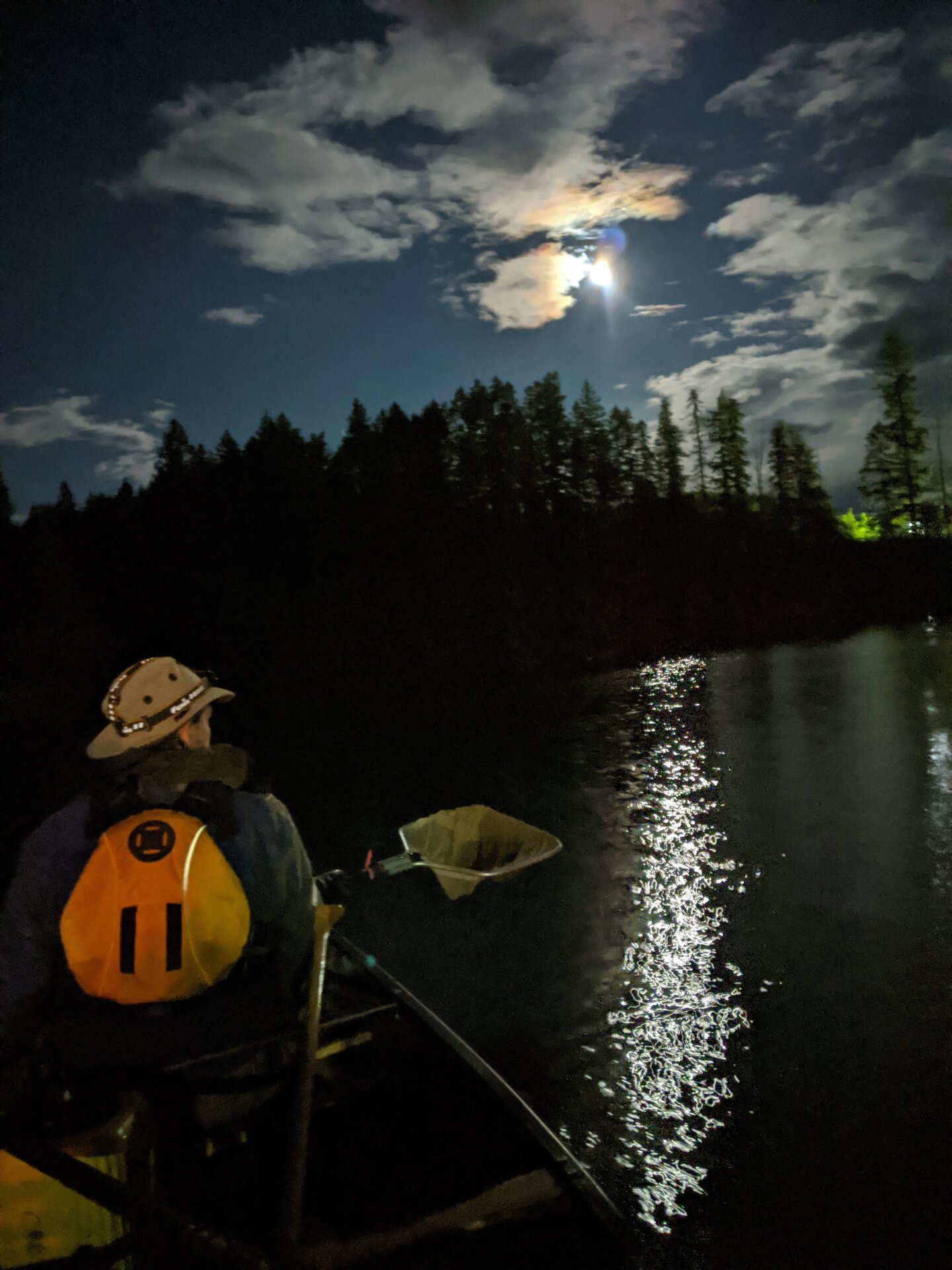The American bullfrogs are voracious predators that eats anything that fits into its mouth! Bullfrogs prey on and out-compete native frog species, including the endangered Northern leopard frog. In addition, bullfrogs are carriers of a pathogen that has caused high mortality in amphibians across the globe.
Bullfrogs are native to Eastern North America but have ended up in the Central Kootenay region. How did they get here and what is currently be done in our region to combat this wetland bully? How can you help prevent the spread?

How did bullfrogs end up in B.C.?
Decades ago, aspiring farmers brought America bullfrogs to B.C. to raise them for meat consumption. How often do you see frog legs on a menu or in the grocery store? Rarely to never. The frog leg industry never took off and these farmers released the frogs into the natural world. This simple act has since caused complicated impacts.
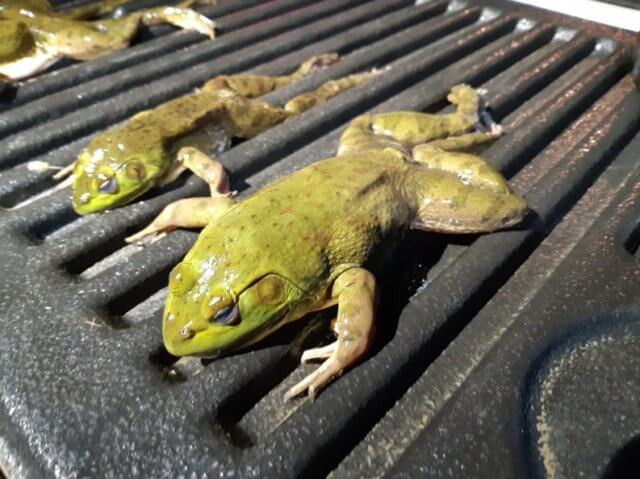
How are bullfrogs spreading in B.C.?
- The pet trade is guilty of spreading American bullfrogs not only in B.C. but globally! Around the world, they are found for sale in pet stores and markets. People who can no longer care for their pet bullfrog sometimes ‘dump’ them into the wild.
- Curious kids love frogs! Little naturalists enjoy capturing a tadpole in nature and bringing it home to watch it transform into a frog. Seems harmless, but when the frog is released into a different body of water, it creates a NEW invasive bullfrog population.
- Natural migration: bullfrogs can naturally migrate between 5 – 19 km per year.

How are American Bullfrogs being managed in the Central Kootenays?
In 2013 our friends at the Fish and Wildlife Compensation Program warned CKISS and other stakeholders about the close proximity of American bullfrogs just south of the border in Idaho. This initiated American bullfrog field work.
- 2014: Northern Leopard Frog Recovery Team & CKISS installed, monitored and analyzed acoustic surveillance equipment called ‘Song Meters’ in Creston = no bullfrogs detected!
- 2015: CKISS continues surveillance work and installed more song meters. Bullfrogs confirmed in Nelway.

- 2016: Bullfrogs confirmed in Creston. Along with traditional surveillance tools, CKISS staff also utilized eDNA sampling, a cutting-edge technology that can be used for early detection of American bullfrogs.
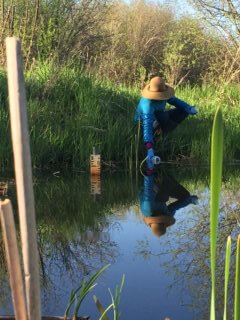
- 2017: Field work confirms that Bullfrogs have dispersed into the Creston region.
- 2018 : CKISS along with the American Bullfrog Action Team (ABAT) conducted field work for early detection and eradication of invasive American bullfrogs. The team began monitoring and eradication efforts in June and wrapped up field work at the end of October. The team caught 672 bullfrogs, the largest weighing in at 200 grams.
- 2019: The field work for bullfrog control coordination was taken over by the Ministry of Forests, Lands, Natural Resource Operations and Rural Development with support from CKISS. The field crew worked long night shifts from May 14 until the season was cut short due to cold weather on October 4. The crew focused most of their attention along the Kootenay River and were successful in euthanizing a total of 1732 invasive frogs this season, a total of 814 of these are in the Creston Valley, 267 in Lomond Lake and 651 in Idaho.

2020 Bullfrog Control Program
Despite the Covid-19 pandemic the ABAT safely ran three crews controlling invasive bullfrog populations in our region, however transboundary efforts were not possible due to the pandemic. From May 18 to October 2, team members started their shifts a few hours before sunset and worked through the night looking for and capturing bullfrogs. They worked tirelessly with extra effort applied to the bullfrog populations in the Creston Valley.
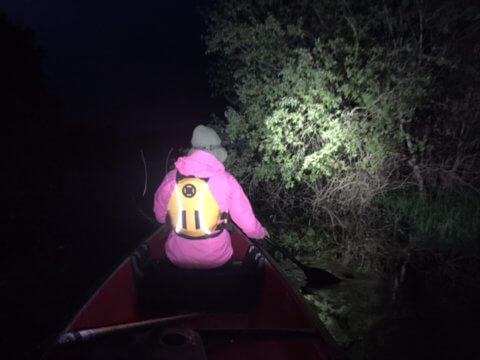
- Good news! The team has continued to see a reduction in the population density and distribution from 2019. There have not been any observed sites with emerging tadpoles, indicating 2019 efforts successfully prevented breeding.
- 171 visual encounters, 212 bullfrogs captured & euthanized, 170 of these are in the Creston Valley, 42 in Lomand Lake.
- 1 egg mass was captured in Creston. That is good news since bullfrogs can lay up to 20, 000 eggs.
- 8 song meters to detect bullfrog calls were installed in peripheral known habitat throughout the Creston Valley. One positive hit was found during analysis and the frog was located and captured.
- The team began to deploy a Conservation K9 team to detect bullfrogs in sites deemed too difficult/ineffective to visual encounter survey.
How can you help prevent the spread of American bullfrogs?
- Do NOT purchase bullfrogs as pets.
- Never release bullfrogs into the wild – Don’t Let it Loose!
- Do NOT transport wild bullfrogs or tadpoles from place to place, it is illegal under the Wildlife Act to capture, transport, keep or sell wild animals including bullfrogs.
- Large tadpoles can be a tempting pet or a popular addition to your backyard pond, but this has been identified as a primary way bullfrogs have been spreading through the province.
- “Build it and they will come!” If you want native frogs in your backyard pond the best thing to do is create a welcoming environment for the frogs: water, shelter and insects.

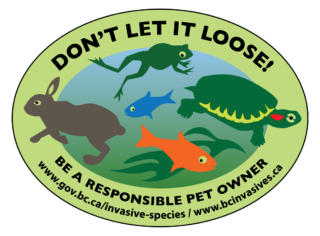
If YOU see or hear a bullfrog report it!
- Phone: 1-250-354-6333
- Fax: 1-250-354-6332
- Email: kootenaybullfrog@gov.bc.ca
If possible, please take a photo and record location details.
DO NOT HARM/ MOVE/CAPTURE ANY FROGS, TADPOLES OR EGG MASSES. Leave this to the experts on the ABAT. Thanks!
Central Kootenay Invasive Species Society gratefully acknowledges the financial support of the Fish and Wildlife Compensation Program for its contribution to the Northern Leopard Frog Preservation American Bullfrog Control. www.fwcp.ca
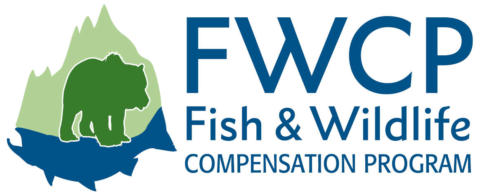
This program is made possible by funding from Columbia Basin Trust, Environmental Damages Fund, and the Province of BC.

